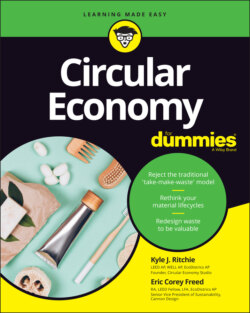Читать книгу Circular Economy For Dummies - Eric Corey Freed - Страница 85
So Much Chaos: Understanding Entropy
ОглавлениеKnowing all about entropy is great if you want to win at Scientific Trivial Pursuit, but what does entropy have to do with the circular economy? The second law of thermodynamics suggests that, throughout the various conversions of energy in nature — like the sun’s rays melting snow or energy from a coal-fired power plant being converted into electricity — waste will always exist. Entropy is a measure of the energy unavailable to people in a closed thermodynamic system. In other words, entropy is the loss of energy that cannot be transferred from one matter to another.
So, how does this concept apply to the circular economy? It’s relevant because, as the second law of thermodynamics tells us, even in a closed, circular system, waste will exist — regardless of how efficient we make those systems. So, for a circular economy to exist, waste and the need for new, raw material inputs must be accepted and built into the process. The goal isn’t to eliminate waste completely — because that’s impossible — but rather to eliminate controllable waste, also known as externalized costs. Then, by comparing the way a linear economy functions (where waste is an accepted part of a material’s lifecycle) to a circular economy (where controllable waste is eliminated), we can discover how to eliminate manageable waste by learning from the natural world and applying what we learn to our own system.
